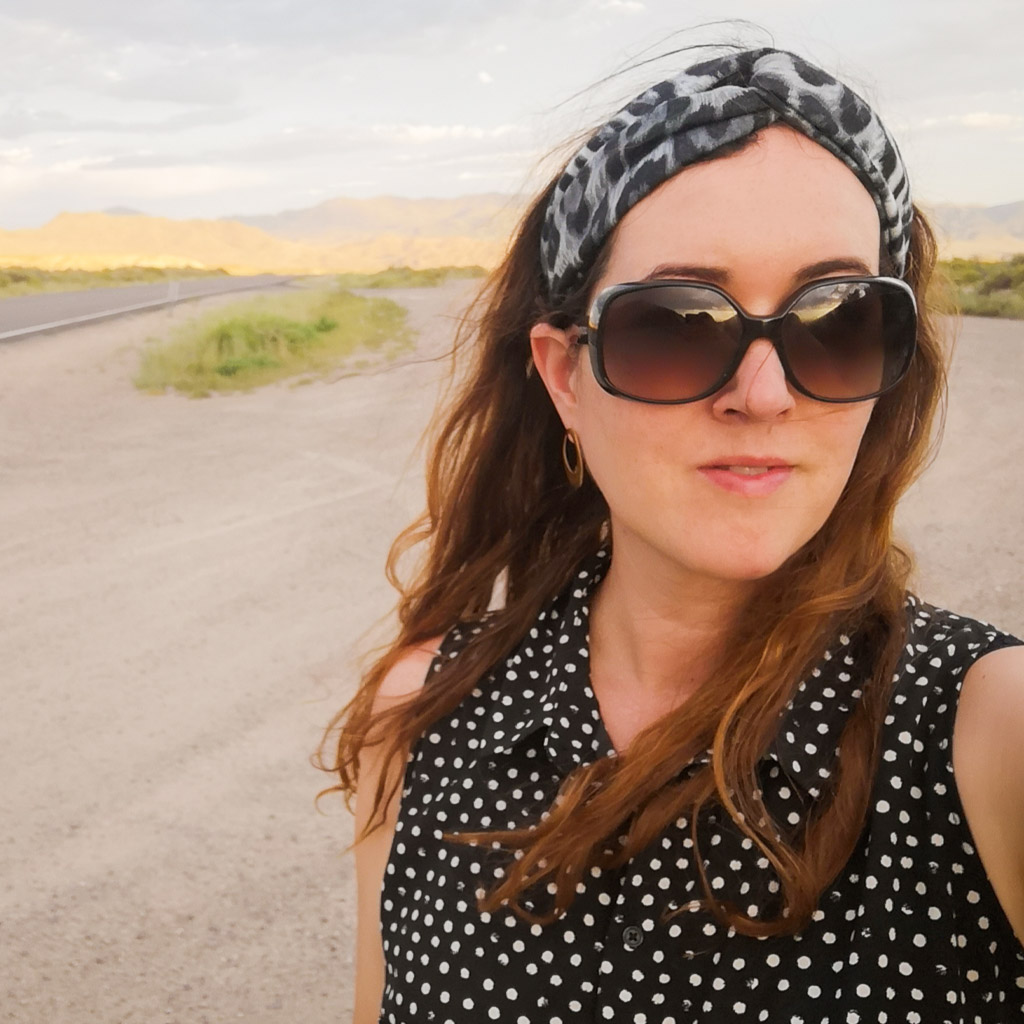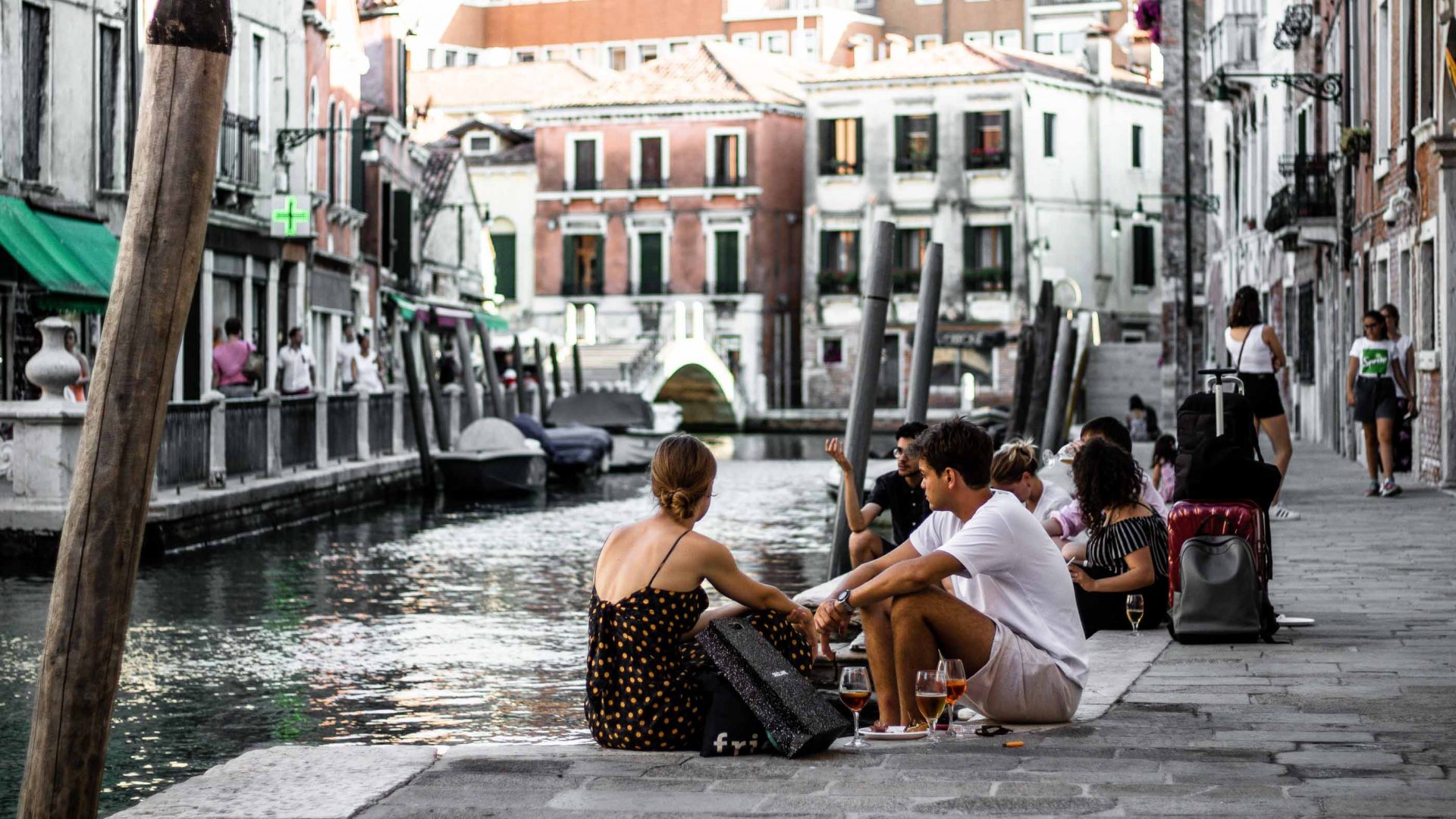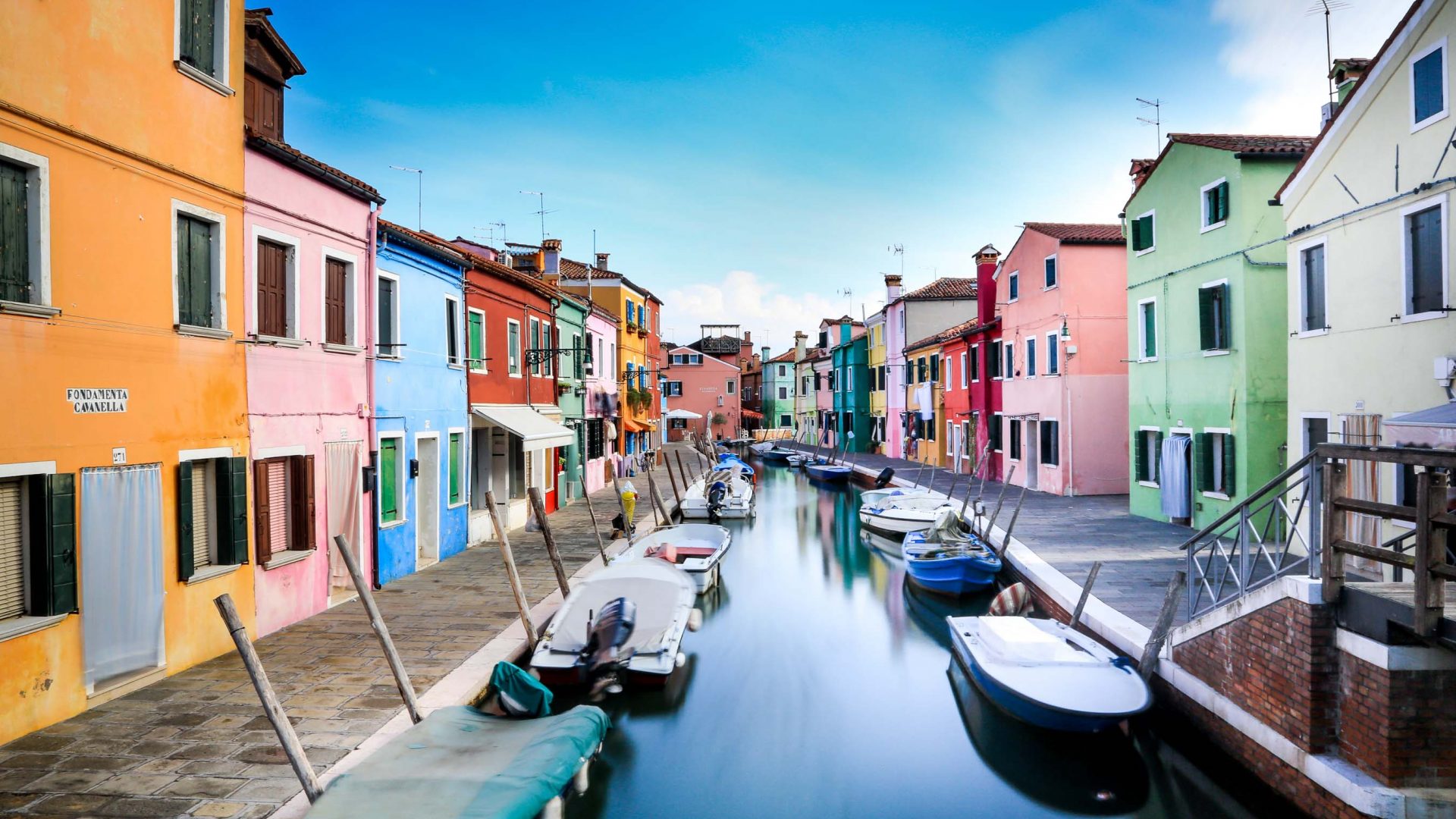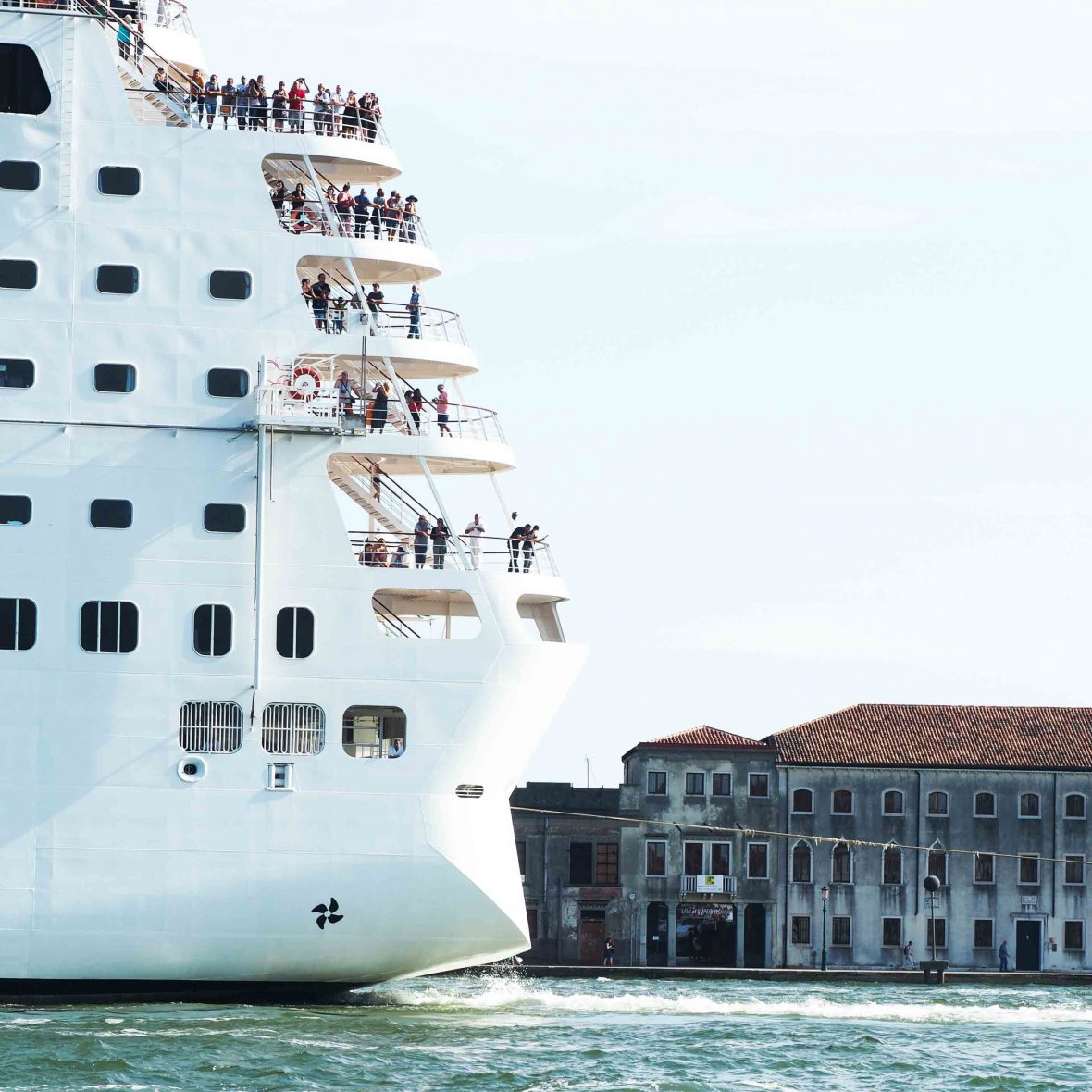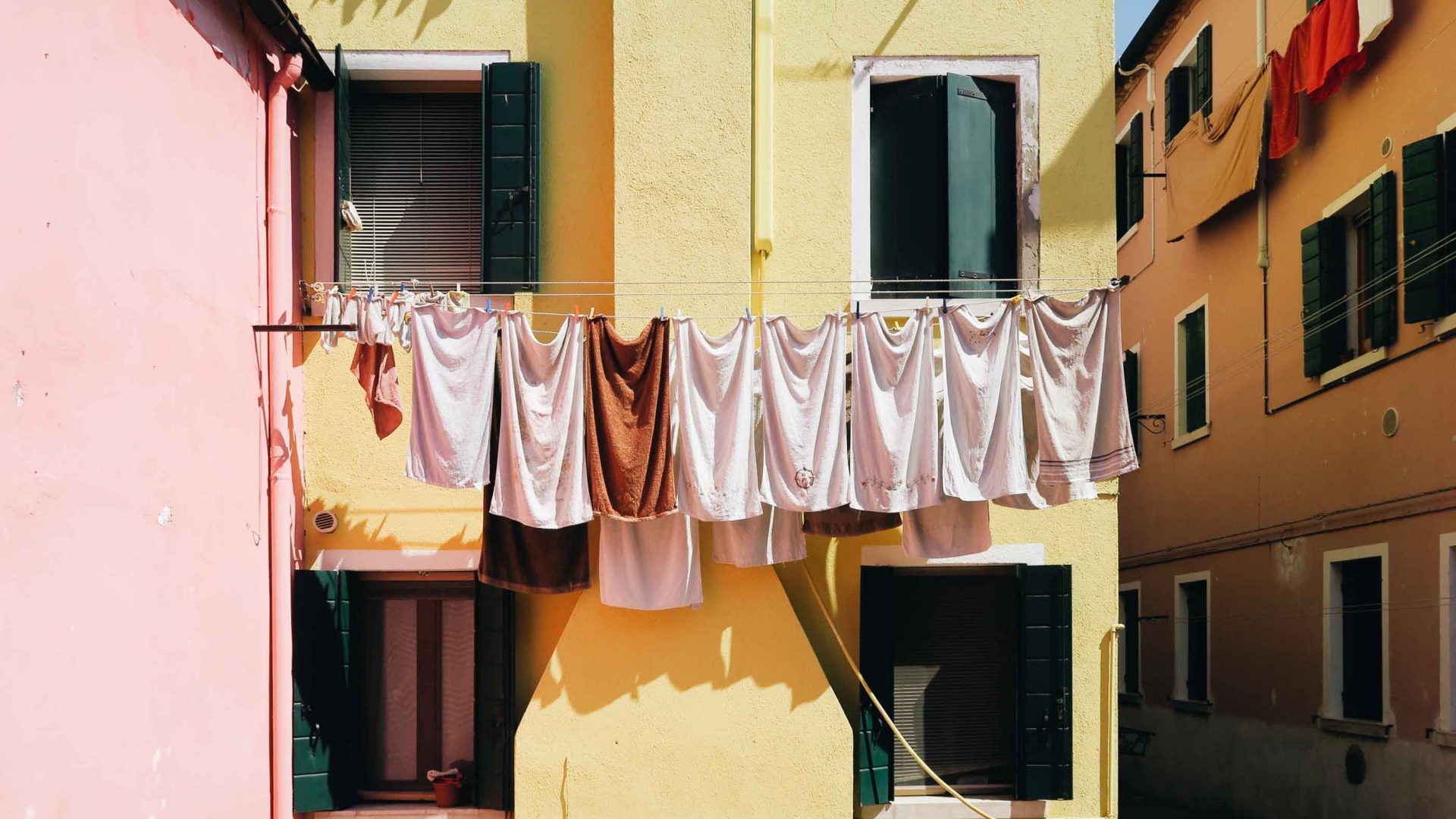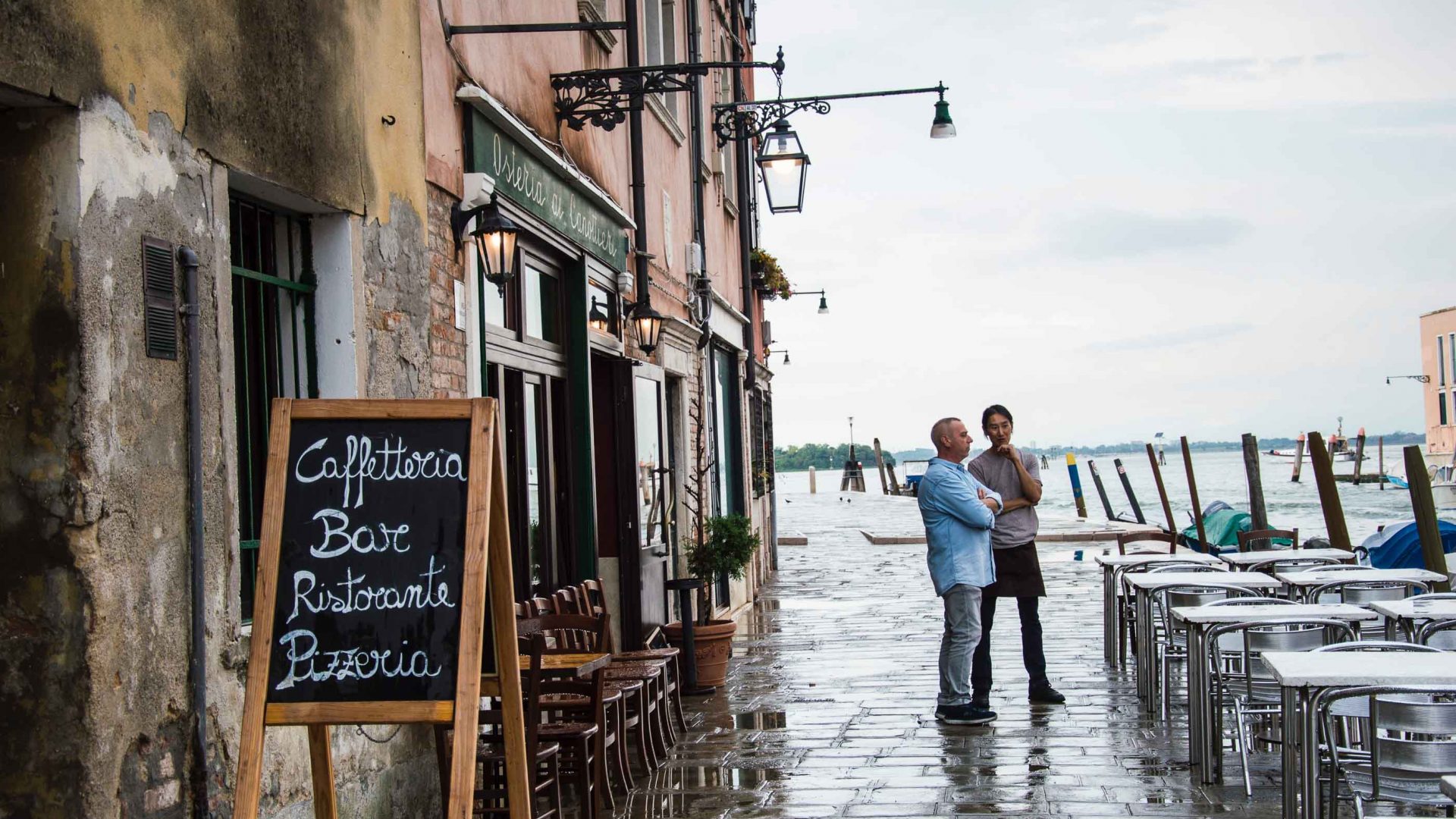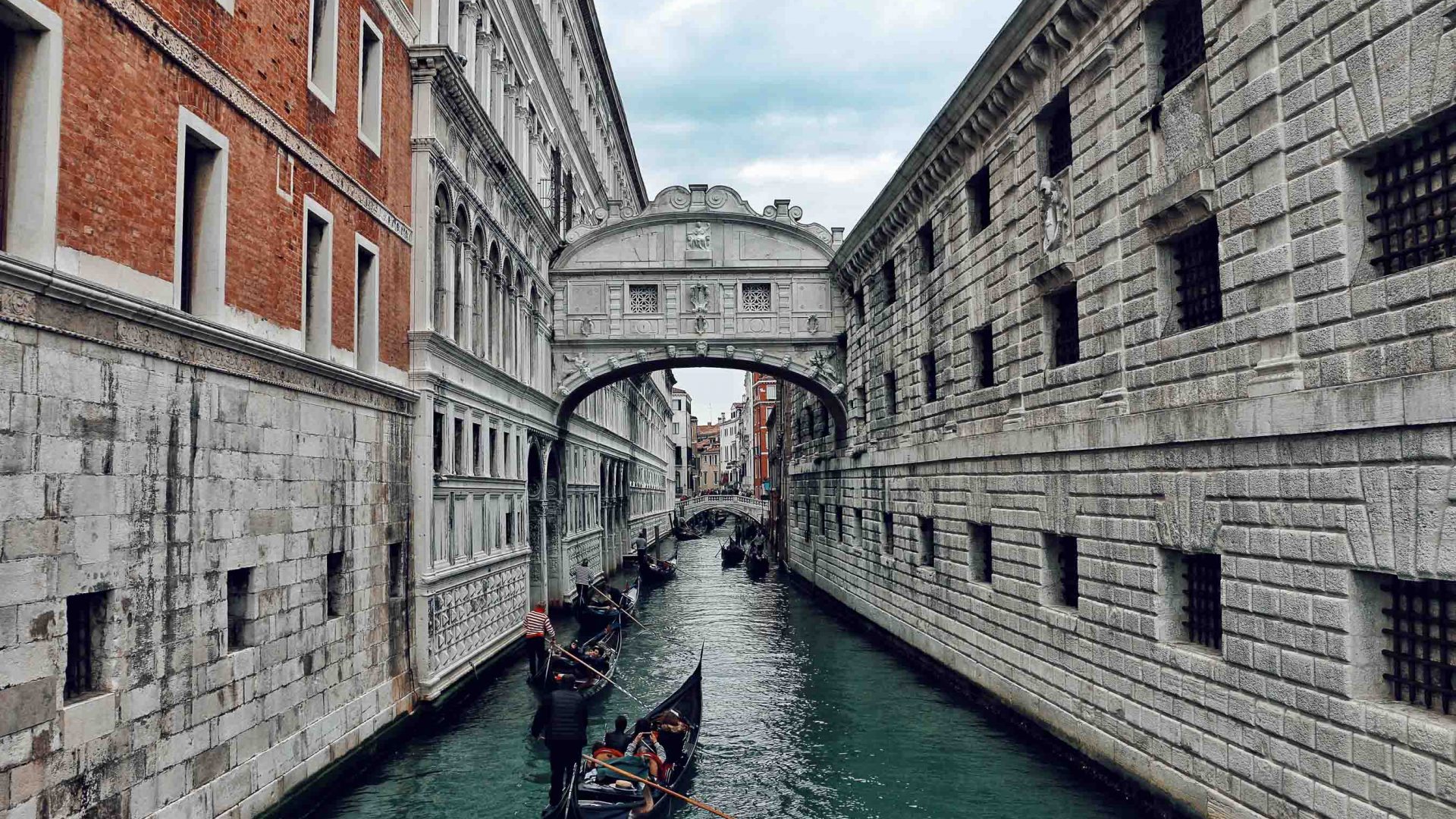
Overtourism in Venice has been widely documented in recent years, as cruise ships, daytrippers, airbnbs and tourist tack filled the city, and left little—if any—room for residents. But with the pause afforded by the pandemic, government and locals alike are looking for ways to rebuild better.
October 3rd, 2020. That was the day that changed everything for Venice.
For the first time in its history, the city built on water was no longer at the mercy of the Adriatic. The MOSE flood barriers, in the works since the 1980s, were finally raised during a high tide—and they worked. It means that we should never again see the devastation caused by floods in 1966 and 2019.
But October 3 was also the day that—to me at least—signaled a change for the future of Venice.
I’d spent the morning marveling that my ground-floor flat was dry, and walking around Piazza San Marco, not quite believing my eyes. The tide was forecast to be 135 centimeters above the average—and the piazza floods at 90 centimeters. I should have been wading through thigh-deep water; instead, along with other residents, I wandered round in bemusement, inspecting the centuries-old drains for the water they normally belch up. Nothing. Just a slick of rain. It felt uncanny.
From the square, I sailed to Tronchetto island, home to the new Venice police headquarters. I was there for a press conference with the mayor about the MOSE, but chatting at the end, he asked if I wanted to see their new Smart Control Room.
That’s when I knew Venice had really changed. The beleaguered administration, which only a year earlier had said there was no point giving interviews because the media was consistently negative, was proud enough of something to want to show it off.
